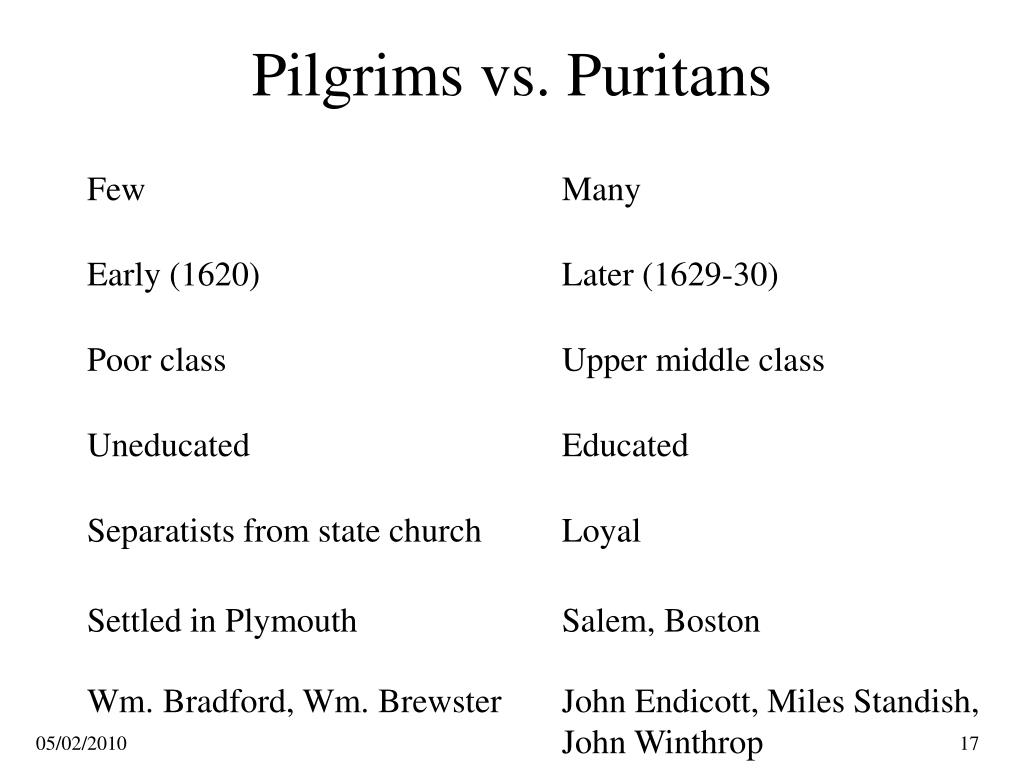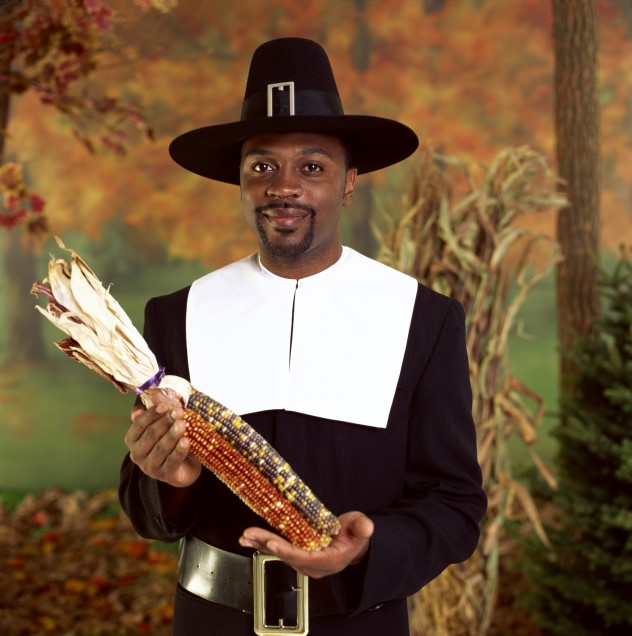


Now, the nonseparating Puritans in England came under real persecution starting in 1630, with the election of Archbishop Laud, who dedicated himself to wiping Puritanism out and bringing the Anglican church as far back toward Catholicism as he could. Tens of thousands of Puritans would emigrate to Massachusetts in the 1630s. When they landed in America, the Separatists had a hard time keeping control of the colony from the majority. The Separatists got on the others’ nerves with their religion, which permeated all aspects of their lives, and the Anglicans got on the Separatists’ nerves with their deliberate sacrilege and mockery of religion. Fights between the two groups broke out almost immediately. The Separatists, then, were in the minority as the Mayflower set sail. They were Anglicans. But mostly, they were people who didn’t really think about religion too much, who just wanted a chance to go to America. Those recruits were not Puritans or Separatists. They recruited tradespeople from London whose talents would be essential to building a new society-carpenters, blacksmiths, etc. The Separatists vowed not to repeat those colonists’ mistakes. The feeling in England was that the Jamestown colonists had gone to America grossly unprepared.
.jpg)
Not all the people on board the Mayflower were Separatists. Stories of the horrors suffered by colonists at Jamestown, in Virginia, were well-circulated in England. The religion of the colonists was secondary to the financial potential they represented. Why? They were funded by financiers in London, and the crown figured that if the colonists made a go of it, the crown would seize the colony and enjoy the profits. So the Separatists received permission from the English government to go to America. They left because Holland’s truce with Catholic Spain was near its end, and the Protestant Separatists would have been wiped out if Spain had taken control once again of Holland. Americans often learn that they decided not to stay there because their children were becoming Dutch, but this is not true. The group that we know as the Pilgrims went to Leiden in Holland. Forced to leave England because it was treason to leave the Anglican church, small groups of Separatists left for Holland and other Protestant European countries. It was the Separatists who took the Mayflower for America. The two groups grew increasingly hostile as the 17th century wore on. The majority of Puritans, who remained within the Anglican church, were known as nonseparating Puritans. Deciding it could never be purified, they abandoned it, separating themselves from it. But some Puritans lost faith in the Anglican church. Puritans began as a group within the Anglican church that wanted to purify it of lingering Catholic influences. They developed a complete system for defining and realizing salvation that I can’t go into in a short post here. Their sense of being persecuted for their faith gave the Puritans a lot of energy. In an effort to stop the wild pendulum swings in her kingdom from extreme protestantism to Catholic resurgence and back again, Elizabeth refused to legitimize the Puritan agenda. She did not prosecute them severely, but she did not rescind the laws making their activities illegal. Puritans would often remove themselves from their assigned parish church to go hear sermons from a Puritan minister in another town’s church. Puritans were English Protestants in the late 16th century who wanted their church, the Anglican church, to follow the Calvinist model more closely and give up the remnants of Catholicism still present in Anglicanism.ĭuring the reign of Elizabeth I, the Puritans consistently pushed their agenda in Parliament and in their local towns. Most don’t know that these are two different groups. Most Americans know the terms Puritans and Pilgrims.


 0 kommentar(er)
0 kommentar(er)
